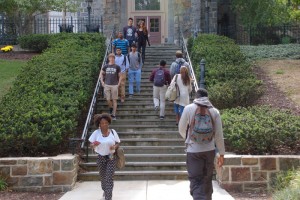
Students take the stairs to and from the University Center on Thursday, Oct. 2, 2014. The accessibilty of Lehigh’s campus for injured, handicapped, and disabled students has often been called into question. (Klaudia Jazwinska/B&W photo)
When Katherine Hamilton, ’15, had a friend come visit her at Lehigh, he had to stay in the car the entire time. He got out once to use the restroom, which was a feat in itself because he had to be carried up three stair steps.
As a wheelchair user, he said he couldn’t be a student at Lehigh because there’s just no way he could get around.
This year marked the 25th anniversary of the Americans with Disabilities Act. Cheryl Ashcroft, the assistant dean of Students Learning Disability Support Services, works with students with disabilities who are protected under this act. Her office accommodates these students and students with temporary injuries who struggle to get around campus.
However, with Lehigh’s mountainous terrain, only so much can be done.
“We’re built on the side of a mountain so it’s a challenge,” Ashcroft said. “And you cannot make everything accessible. You just can’t.”
Wheelchair users, mobility impaired students and physically disabled students face difficulties getting around Lehigh’s campus. In addition to campus mobility, students also have a hard time accessing their residential living and academic buildings.
To help combat these issues, the Disabilities Support Services Office coordinates with transportation services to give students rides. In addition, the office works with facilities to make sure snow is shoveled out in certain areas. Automatic door buttons have also been implemented, and the office has moved classrooms and dorm rooms for students.
Students need to inform Ashcroft of what they need, and the office works to the best of their abilities despite Lehigh’s campus.
Even so, it’s difficult to solve every issue that Lehigh’s terrain creates. With administrators struggling to fully accommodate students with temporary injuries, it begs the question whether Lehigh is the right place for students with permanent physical disabilities. In Ashcroft’s 23 years working at Lehigh, she’s only seen seven students who were wheelchair users attend the university — three graduate and four undergraduate students.
“You can’t really change Lehigh’s hills,” Sarah Glickstein, ’14, ’15G, said. “You can’t change Lehigh’s stairs. And those are just things that need to be accommodated in the future.”
The problems
The average campus tour consists of walking up and down 238 steps.
When Dana Gallant, ’15, broke her foot and was in a boot for two months, she said the staircases were one of her biggest challenges. She noted that the staircases are normally difficult to maneuver, and it was worse when she was injured. She thinks Lehigh should implement more hand railings because not all of the staircases have them, and she questioned whether the stairs are up to code.
According to John Mantikas, ’18, Lehigh implementing ramps would be useful. Mantikas broke his fibula and damaged ligaments in his ankle, and said he often feels like he’s holding up people when he’s trying to walk up and down the stairs.
When Hamilton moved in her freshman year, her father was in a wheelchair due to a recent accident. Consequently, he wasn’t able to help her move into her dorm in Upper Centennial.
“He couldn’t even come onto the first floor,” she said. “There’s a couple of steps, which doesn’t seem like a lot to other people, but for someone in a wheelchair that’s big and bulky, you can’t get it up those steps. So he just had to sit outside Rathbone in the rain.”
Had her father been a permanent wheelchair user, Hamilton said she probably wouldn’t have chosen to come to Lehigh.
Ashcroft said wheelchair users tend to self-select out because of Lehigh’s steep campus. She noted that the campus is difficult for able-bodied people to maneuver, so it’s hard to get around even with an electric wheelchair.
For Gallant, she was thankful that her injury was only temporary. She said she couldn’t imagine how hard it would be to get around campus in a wheelchair.
Lehigh does provide alternative building entrances that are accessible, said Assistant Director of Admissions Matthew Cunningham. However, he noted that Lehigh should add extra signs to improve designations of alternate entrances because most people aren’t aware that they exist. Gallant agreed, adding that the elevators also aren’t easily identifiable.
One thing Lehigh cannot improve, though, is the weather. Winter conditions can make it even more difficult for students to get around.
“I think they should take into consideration canceling early morning classes more, especially if they haven’t cleared all pathway and all roads well enough,” said Devon Gallagher, ’16, who has a prosthetic leg. “Because I think sometimes they forget about people who live on the Hill or people who live on campus and they’re trying to all get to class, or even commuters. Not everyone can walk as well in the snowy conditions. I think sometimes Lehigh doesn’t realize that.”
Glickstein agreed with this notion, and said she was scared to go outside when injured because it was icy. Consequently, she missed a lot of class because she was physically unable to go.
“I’m not a person who misses class,” Glickstein said. “I was really upset about it.”
Ashcroft recommends that injured and physically disabled students contact professors to say they cannot come to class when the conditions aren’t safe outside. She thinks that the ice makes it impossible for any student to be safe because they risk the possibility of falling.
Due to how difficult it can be for students to get around campus, a very small number of wheelchair users attend Lehigh.
Ashcroft said that wheelchair users are more likely to attend a flatter school because more student wheelchair users will be there, creating a more normalized experience.
Lisa Lasko, ’12, is a quadriplegic wheelchair user, meaning she does not have use or feeling in both arms and legs due to an injury. However, she decided to come to Lehigh despite its vertical landscape. The hardest part about being at Lehigh, though, was students staring at her.
“When you consider the percentage of people who are in a wheelchair, that’s a very small number,” ” Ashcroft said. “And then the percentage of students in wheelchairs who want to come to Lehigh University, that’s an even smaller number.”
The solutions
To help combat these difficulties, Lehigh is working to make the campus more accessible. Accessible student housing in located in Campus Square, Brodhead House and Lower Centennial, Ashcroft said. If a student becomes temporarily injured and lives in an inaccessible dorm, Ashcroft’s office will work with the student to move them to a more accessible room.
Gallagher said that right after she decided to attend Lehigh, she contacted the Disabilities Support Services Office. She was concerned about communal showers because she has to take her leg off to shower, and she was worried somebody would steal it. She then worked with Residential Services and was given a private medical suite.
Recently, the houses on Hill were renovated to have accessible entrances. This change occurred after a complaint was filed from someone who isn’t a student, and a review done by the Office of Civil Rights found it was necessary.
Maginnes Hall, Iacocca Hall and Packard Laboratory are some of the most accessible academic buildings. Because of Mantikas’ injury, his class that originally located on the top floor of Christmas Saucon was moved to Packard Laboratory because he has access to an elevator there.
Ashcroft coordinates with a current student who is a wheelchair user. She has to know his classes before registration to make sure his classrooms are accessible when rooms are assigned. In addition, he gets priority registration. Seven adjustable tables were also purchased to make sure they fit the use of his wheelchair.
However, Ashcroft noted that it’s not just about making sure the buildings are accessible – it’s also pertinent that the students can travel from point A to point B.
Lasko said once she was admitted, she contacted Ashcroft to tell her she has a disability, inform her of the accommodations she needed, and provide a doctor’s note and proof that she is disabled. From there, Ashcroft made sure all of her classes are accessible.
Because Lasko doesn’t have use of her arms, someone had to take notes for her. She said her professor would ask a student or she would ask someone she knew in class to take notes for her. The student would then take notes on carbon copy paper, which allowed them to both have a copy.
Students can also acquire a medical parking permit, but they are not the same as a state issued handicap passes. The permit allows students to park in any of the 21 handicap spots on campus only, but not on Packer Avenue because it is a city street.
However, when Gallant was injured, she said she had a tough time obtaining a pass. She said she was on crutches and Parking Services wouldn’t give her a permit when she came in. Students are required to fill out a medical request for special transportation parking form, which a doctor completes and sends back. From there, the office looks at where the student’s classes are located to see if they will get the pass.
Students are encouraged to take the bus, if they can. When she was injured, Gallant lived on the Hill. She was annoyed by having to take the bus down, though, because it goes to Mountaintop first, before going to lower campus. She ended up walking or getting rides from friends, but she said she was late to class a lot.
For students who don’t have a car on campus, Ashcroft will explore what options they have available to them. She said the university will permit first-year students to bring their car to campus if they have one. If the student lives in a Greek house and has friends that can drive them down, the permit will be given to their friends. Sometimes transportation services will pick students up and drive them to class if they don’t have a car and can’t drive.
Ashcroft said this year, Transportation Services created a pilot program to see the need and the cost for driving students to class. She believes it was successful.
When Glickstein was injured, though, not all of these measures were in place. At the time, temporary injuries were handled through Transportation Services or the Office of the Dean of Students, and not the Disabilities Support Services Office. As a first-year student without a car and without these services offered to her, getting to class was one of the most difficult things for Glickstein.
“For freshmen it’s a really big obstacle,” she said. “You don’t have a car. There’s no way for you to get anywhere. If you’re rushing a sorority or fraternity, especially a sorority, they can’t drive you anywhere.”
Glickstein was a member of Student Senate and formed a committee to bring these concerns to Ashcroft. Glickstein told Ashcroft her story and that she wanted to see an improvement because she wasn’t happy about the lack of resources. From there, a Senate committee for transportation accessibility working in conjunction with Ashcroft and a transportation service were created.
Ashcroft said if a person with a disability or a injury is concerned about snow, ice and salt, they can contact her and she will coordinate with Facilities Services. She spoke of one student on crutches who wasn’t able to shovel out the space in which her car was parked. She contacted Ashcroft, who then spoke with Facilities Services to get her car shoveled out.
Ashcroft also makes sure Facilities Services has the Campus Square parking garage as a priority for getting shoveled out, or else a wheelchair user student can’t get over the curve cut when leaving the garage.
When prospective students who are physically disabled tours Lehigh, they can go through the Disabilities Support Services Office or Admissions, depending on who they decide to contact. Ashcroft said physically disabled students rarely come, and about one student every two years contacts her. She recommends that students drive through and meet with her, and she or a student will take a prospective student on tour of campus.
The Office of Admissions offers a specific tour that it will give to accommodate these needs. Cunningham said there is information on the tour website that says to notify the office if a prospective student or someone in his or her party requires special assistance. The office will then make sure the party has its own tour guide. Even if the family does not contact admissions beforehand, the office will still make accommodations.
The disability tour takes a slightly different route than the normal tour that allows a group to get into buildings through alternate entrances.
The main difference, though, is the opportunity to visit residence halls. Cunningham said families usually go to Lower Centennial, but there are two steps that get in the way. The tour guide then leaves it up to the family because sometimes a person on crutches can walk up the stairs, but sometimes the family skips that part of the tour.
Cunningham believes that people realize Lehigh is more accessible than they thought after going on a tour.
“Lehigh’s campus, the make-up of the campus, should not serve as a hindrance to students who wish to come here and study,” said Bruce Bunnick, the director of undergraduate admissions.
Ashcroft said she works with students to assess what they need to make the campus more accessible. She said until a student requests that need, she might not know what’s lacking or what can be added. She will not purchase something unless she knows of a student who needs it, because technology has to be upgraded often. Each student has different needs, she said.
For instance, Lasko requested that accessible buttons be implemented on doors so she wouldn’t have to worry about someone opening the door for her.
“It gave me a source of independence where I didn’t have to have a person holding the door so that was a great thing they did,” she said. “That was the best thing they did I think.”
Although Lehigh works to accommodate the needs of physically disabled and temporarily injured students, not everything can be fixed. Part of Lehigh’s master plan is to make the campus more accessible and efficient, Ashcroft said. However, at the end of the day, Lehigh is built on the side of a mountain and not everything can be made accessible.
“It’s a tough campus to negotiate, there’s no doubt about that,” Ashcroft said. “I think facilities and the planning committees as they go through and try to renovate buildings are always very mindful of trying to make it more accessible. But you can’t flatten a campus, and I think that’s what might make a student whose a wheelchair user would choose a campus that’s a little bit more flat or a little bit more level ground.”

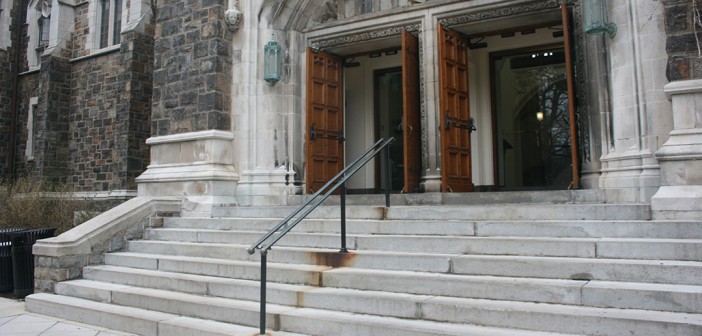
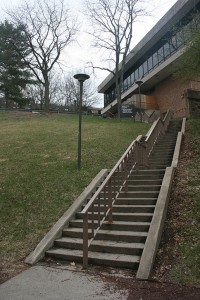

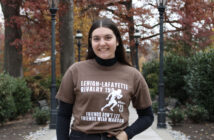
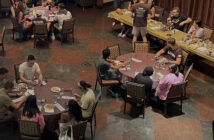
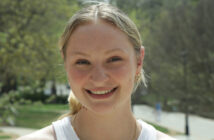
Comment policy
Comments posted to The Brown and White website are reviewed by a moderator before being approved. Incendiary speech or harassing language, including comments targeted at individuals, may be deemed unacceptable and not published. Spam and other soliciting will also be declined.
The Brown and White also reserves the right to not publish entirely anonymous comments.